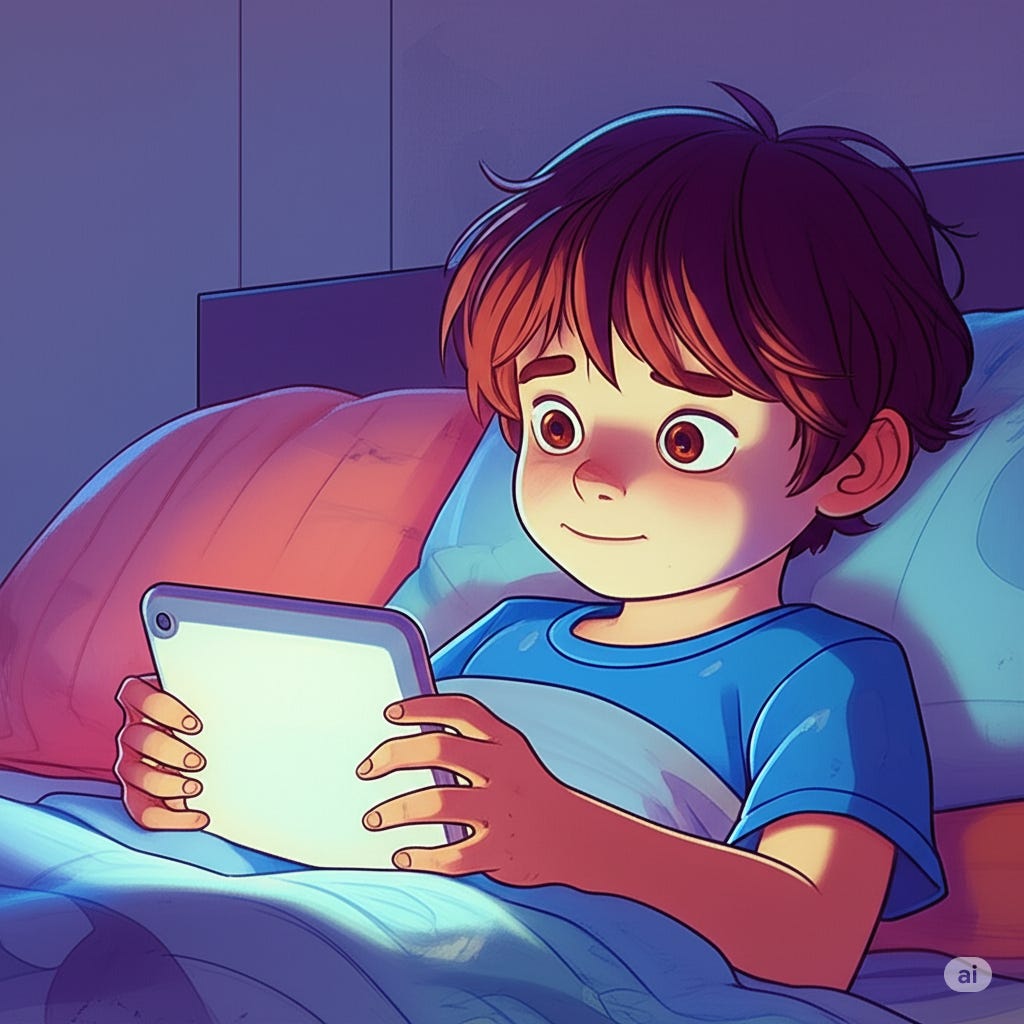Children, Screens, and Mental Health: What Therapists Should Know
Research on the Impact of Screen Time on Child Development and Well-Being
[Note: Above is an AI-generated read-through of the text summary below]
Children’s screen time has become a growing topic of concern, especially in light of the rapid evolution of digital technology over the past two decades. Although the internet went public in 1983 and the first smartphone debuted in 1997, the true impact didn’t hit until these technologies fused during the 2000s. Now, 25 years later, we're grappling with the implications—not just for adults, but for the psychological development of children and adolescents.
According to national data, children ages 8–12 average four to six hours of screen time per day. For teens, that number jumps to nine hours! These figures are more than just numbers—they reflect significant behavioral and emotional shifts. Below, we will cover two important research studies, one from 2018 and one from 2025, which support the fact that screen time is harmful for children’s overall well-being and mental health.
Psychological Well-Being and Screen Time: The 2018 Study
A large-scale 2018 study by Twenge and Campbell analyzed data from over 40,000 families to examine how screen time relates to children's well-being. Screen time included all digital media—TVs, phones, computers, tablets, and video games. Here’s what they found:
Up to one hour of screen time per day had minimal impact on well-being.
More than one hour per day was associated with steadily decreasing psychological well-being.
Specifically, higher screen use correlated with:
Lower curiosity
Reduced self-control
Greater distractibility
Trouble making friends
Emotional instability
Difficulty finishing tasks
In adolescents aged 14–17, those spending more than 7 hours per day on screens were more than twice as likely to have:
Been diagnosed with depression or anxiety
Seen a mental health professional
Taken psychiatric medication
For preschoolers (ages 2–5), heavy screen use was linked to frequent temper loss, difficulty calming down, and trouble transitioning between tasks. Interestingly, screen time in this age group didn’t show consistent links with positive social behaviors such as empathy or affection, although limitations in the data make this finding uncertain.
Sleep, Activity, and the 2025 Study
A more recent 2025 study by Alexander and colleagues examined the relationship between phone use and physical activity and sleep. Researchers used what is called “passive sensor data”—installing an app on teens' phones to monitor screen time and equipping them with Fitbits to track sleep and movement. The study included 791 adolescent participants, providing valuable insights into how digital habits impact overall well-being.
The findings were clear:
Daytime use was linked with less physical activity, fewer steps, and more sedentary behavior.
Late-night use was strongly associated with sleep disruption, including:
Shorter sleep duration
Later sleep onset
Later wake times
Every minute of screen use after becoming sleepy affected the child’s overall sleep.
Therapist Takeaways
1. Screen Time Is Clinically Relevant, Especially for Adolescents
Screen use is consistently associated with decreased well-being and increased psychological symptoms, especially in teens. Routine screening for screen habits is advisable in intake and ongoing assessment.
2. Ask About Both “How Much” and “When”
Don’t just assess total hours—timing matters. Late-night use is especially disruptive to sleep, while daytime use may displace physical activity. Ask about both.
3. Connect Screen Use to Presenting Concerns
Fatigue, low energy, or irritability? Explore late-night usage.
Low activity or physical complaints? Consider daytime overuse.
Mood or anxiety disorders? Assess total daily screen time, especially if over 4–7 hours.
4. Emotional Regulation and Behavior Issues May Be Linked
Excessive screen time is tied to lower self-control, poor emotional regulation, and impulsivity—key issues in therapy for children and teens. Consider screen time as a contributing factor.
5. Preschool Patterns Are Different, But Still Matter
In younger kids, screen time affects emotional reactivity more than social skills. While the data is mixed, behavioral disruptions (like temper loss or trouble calming down) should still prompt screen habit evaluation.
6. Be Cautious About Causality, But Confident About Relevance
These studies are observational—we don’t know whether screen time causes mental health problems in a straightforward way, but the findings are still very meaningful: both studies reveal consistent associations between screen time and various well-being indicators.
7. Highlight Research Strengths in Psychoeducation
Help families understand that newer research—like the 2025 Alexander study—uses real-world, sensor-based data. These are not just parental guesses or teen self-reports; they offer credible, objective insights.
In Conclusion
Screen time isn’t just a lifestyle issue—it’s a clinical one. As therapists, we’re in a unique position to help families and adolescents navigate a digital world that often overwhelms their developmental capacities. By assessing screen use patterns, providing psychoeducation, and integrating behavioral interventions, we can support healthier habits that promote psychological resilience and well-being. Whether you're working with a teen battling anxiety or a child struggling with self-regulation, screen time may be a vital piece of the puzzle—and a gateway to change.
Attribution: This summary was created by the team at Psychvox and is based on two sources: “Associations Between Screen Time and Lower Psychological Well-Being Among Children and Adolescents” by Twenge and Campbell, and “Adolescent Smartphone Use, Sleep, and Physical Activity: Daily Associations Between Sensor-Based Measures in the Adolescent Brain Cognitive Development (ABCD) Study” by Alexander and colleagues. The Twenge and Campbell article is licensed under CC BY 4.0. Changes were made to adapt the content for clarity, style, and length. No additional restrictions have been applied, and nothing in this summary should be taken to imply endorsement by the original authors.


